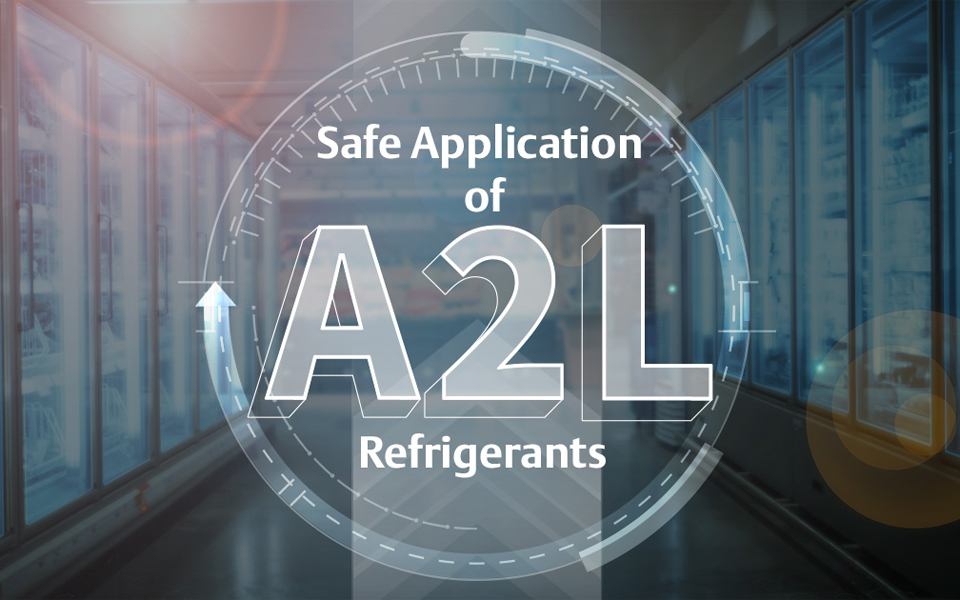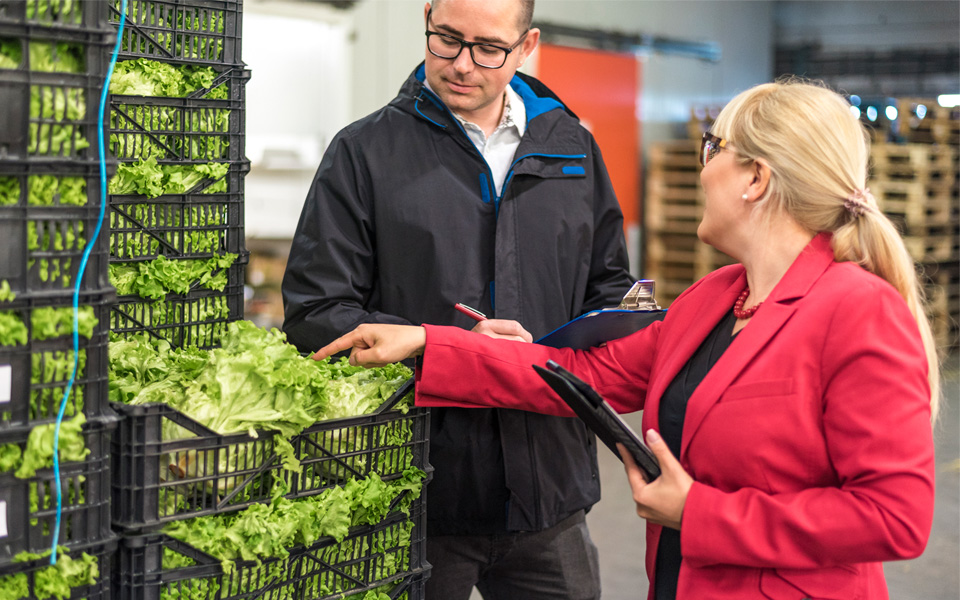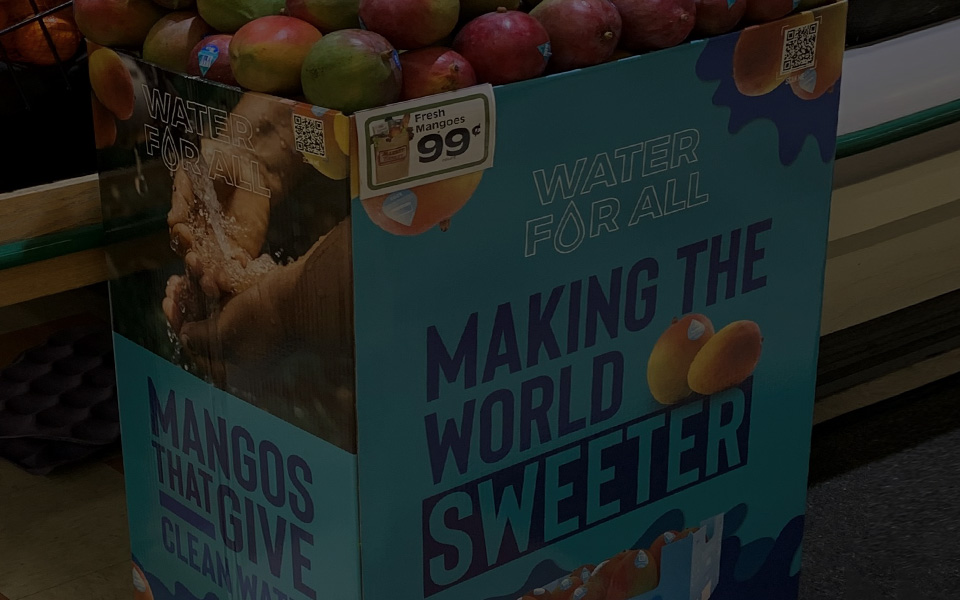The stage is set for the emergence of mildly flammable A2L refrigerants in U.S. commercial refrigeration. As I discussed in the first installment of our new A2L Fundamentals blog series, federal regulations are in the process of aligning with the global hydrofluorocarbon (HFC) phasedown, which would restrict global warming potential (GWP) limits and favor the use of A2Ls. These new proposals would not be possible without guidance from recently updated safety standards that govern the use of flammable refrigerants. This blog will explain how these safety standards apply to commercial refrigeration equipment and help to ensure application safety. I also cover this topic in our companion video series; please visit our content hub to explore these videos.

Per ASHRAE 34 refrigerant classification system, A2L refrigerants have lower toxicity and lower flammability ratings (aka mildly flammable). A2Ls are synthetic refrigerants composed of a variety of blends and single-source components, such as hydrofluoroolefins (HFOs) and HFCs. Offering zero ozone depletion potential (ODP) and several of which meet the low-GWP levels below global regulatory thresholds of 300 and 150, A2Ls have the potential for wide applicability across self-contained and remote commercial refrigeration equipment and applications.
The use of flammable refrigerants is not a new concept in commercial refrigeration. R-290 — which has an A3, higher flammability classification — has been used safely for more than a decade in low-charge, self-contained applications with a maximum charge of 150g. A2L refrigerants are more difficult to ignite and have a lower severity of ignition than R-290. As such, they are being considered in higher charge limits, giving them a greatly expanded application potential. The purpose of safety standards is to define the appropriate precautions that must be taken within commercial refrigeration equipment and systems to ensure proper and safe operation.
Defining the proper use of A2Ls in self-contained and remote equipment
Both product and system standards have recently been updated to support A2L use in commercial refrigeration. In 2021, the Underwriters Laboratories (UL) published the 2nd edition of its UL 60335-2-89 product safety standard, which included provisions for the use of A2L refrigerants and higher charges of R-290. ASHRAE standard 15 was updated in 2022 aligning with the product safety standard charge limits and mitigations for A2L and A3 refrigerants in refrigeration systems, specifying requirements for safe installation and operation.
UL 60335-2-89, 2nd edition provides guidance for the safe design of equipment using A2L refrigerants in self-contained and remote refrigeration systems. One of the benefits of using A2L refrigerants over propane is the potential for higher charge limits which would enable increased equipment capacities in self-contained equipment. A2L charge limits for self-contained equipment are determined by two factors:
- Whether the units have an open- or closed-door (or drawer) design
- The lower flammability limit (LFL) rating of the selected A2L refrigerant
Self-contained equipment charge limits are calculated as follows:
- m1 = 8 m3 × LFL for closed-door (or drawer) designs
- m1 = 13 m3 × LFL for open-style designs (without doors or drawers)
UL 2-89 also defines a testing methodology (Annex CC) that applies to all commercial refrigeration equipment charged with more than 150 grams of an A2L — which is also the current charge limit of R-290 in self-contained equipment. Original equipment manufacturers (OEMs) must follow proper protocols and construction guidelines to prevent flammable refrigerant concentrations in the event of a leak (or releasable charge). Annex CC testing also requires OEMs to verify that their equipment — in the event of a leak — does not exceed 50 percent of the refrigerant’s LFL.
For remote and/or field-erected systems — such as condensing units that support walk-in coolers and freezers (WICFs) and mini racks for distributed architectures — UL 2-89, 2nd edition provides additional guidance for A2L use. A2L charge limits in remote systems are based on the LFL of the selected refrigerant, plus:
- The volume of cold storage room or other occupied space that potentially could be subjected to flammable refrigerant concentrations
- The use of safety and/or risk management measures applied in the equipment and/or installation (e.g., circulation fans, ventilation, safety shut-off valves)
Thus, A2L charge limit calculations in remote applications are based on the size of the application as follows:
- m1 = 13 m3 × LFL for closed-door (or drawer) designs
- m1 = 8 m3 × LFL for open- designs
- m2 = 52 m3 × LFL
- m3 = 260 m3 × LFL
Using the A2L R-454C as an example, charges could reach up to 8 pounds in a self-contained case (open design) and up to 168 pounds in a remote system. These potential charge limits open new possibilities for equipment and system design, while meeting the low-GWP thresholds currently proposed.
The product safety standards deployed globally and in the U.S. are based on extensive research and considerations of using flammable refrigerants. By following these equipment and system design requirements, the probability of a flammable event can be significantly reduced.
Our next blog in this A2L Fundamentals series will discuss best practices for servicing A2L systems. To learn more about A2Ls, please view our A2L Fundamentals blog series.

Six Ways to Reduce Food Waste by Tracking the Supply Chain
*On June 1, 2023 Emerson’s Climate Technologies business became a new standalone company –...

Protect Valuable Shipments in High-Crime Areas
*On June 1, 2023 Emerson’s Climate Technologies business became a new standalone company –...

Real-time Tracking Protects Valuable Mango Cargo
*On June 1, 2023 Emerson’s Climate Technologies business became a new standalone company –...
